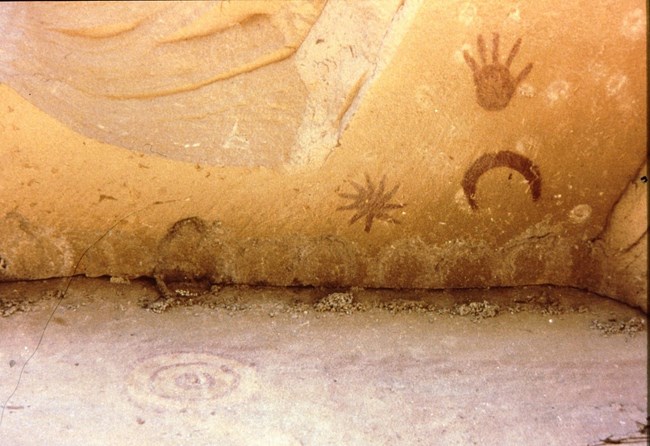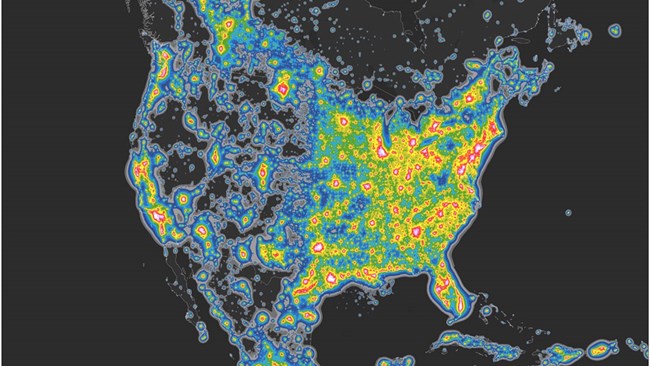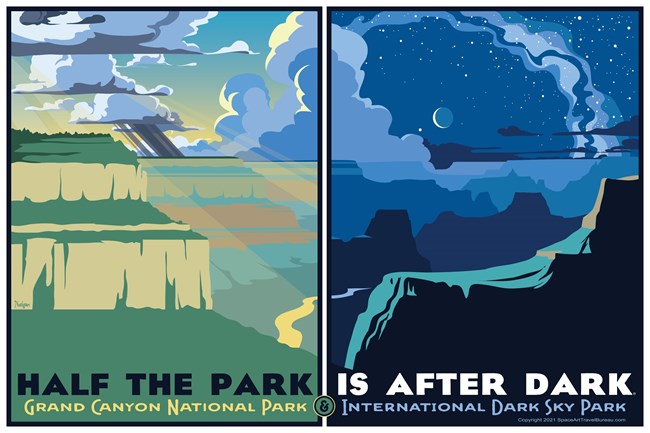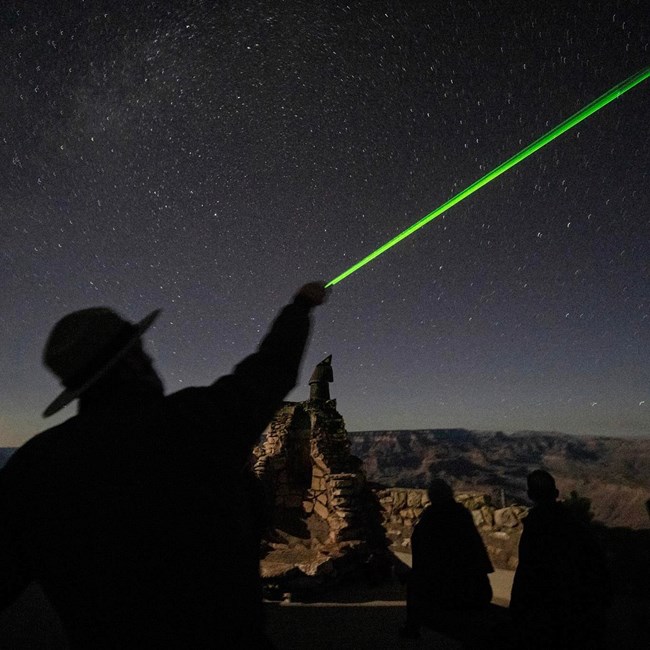Last updated: July 5, 2022
Article
A Brief Word on Night Skies

NPS Photo by Dan Pawlak
On June 9, 2022, members of the National Aeronautics and Space Administration’s (NASA) SpaceX Crew-2 mission visited National Park Service Headquarters in Washington D.C. for a celebration of science, astronomy, art and exploration.
SpaceX Crew-2 returned to earth last November after a record-setting six months at the International Space Station. During their visit, the crew met with park leadership and employees to learn about the National Park Service’s efforts to protect and preserve our dark skies.
The following is the introductory speech given by Grand Canyon National Park Ranger Rader Lane to SpaceX Crew-2, National Park Service leadership, and Department employees in the North Penthouse of the Department of the Interior building. Read the full story here.
A Brief Word on Night Skies
Rader Lane - Grand Canyon National Park - June 9, 2022
NPS Photo



Fabio Falchi et al - Science Advances 2016

NPS Photo

Tyler Nordgren
Grand Canyon National Park and its non-profit partner the Grand Canyon Conservancy host the Astronomer in Residence Program where professional and amateur astronomers, writers, visual and performing artists, (astronauts), of all kinds are invited to live at the park for a time, focusing their disciplines through the multi-faceted values of one of the most pristine night skies in the United States.

Photo by Austin Mann
Interpretive rangers across the country provide constellation talks, telescope viewing, Full Moon walks; we include visitors in the conversation through cutting-edge Audience-Centered-Experiences (ACE); parks partner with and provide forums for our indigenous communities to share regional stories of the skies; and we create media in the digital realm throughout the year to spread the word about the threats of light pollution, the values of pristine natural darkness, and the importance of science literacy.
Grand Canyon became an International Dark Sky Park in 2019, part of a growing list of dozens of national parks and other public lands that have achieved this certification. The park inventoried an unprecedented 5094 lights and have retrofitted most of them to be night-sky-friendly. With that certification, one of the crown-jewel parks has become undoubtedly one of the largest, most complex International Dark Sky Parks in the world. Consequently, one of the most visited national parks is also one of the darkest--it’s our national parks that now serve as worldwide hubs for visitors to experience not only the aesthetics of our vanishing night skies, but the subtle emotions we have lost in society by not being able to commune with the stars on a nightly basis, emotions that our ancestors knew well, emotions that today’s astronauts know well—feelings like sublimity—in the deep philosophical sense of the word: a mixture of awe and terror at the overwhelming profundity of nature. These emotions humble us, they connect us.
For in no other place on nocturnal Earth as in parks like the Grand Canyon, can we stand between so much deep time revealed beneath us in stone and above us in star, and find these experiences that, at the end of the day, are what organizations like NASA and the National Park Service are founded upon: those that promote the exploration of outer space so that we may come to know our inner space.
